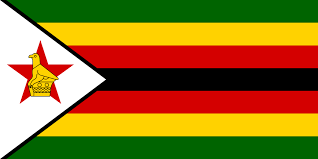Zambia’s Positive Macroeconomic Strength, Urgently Needs Clearer & Grounded Cost-Effects
Zambia’s economy is showing renewed signs of stability as the foreign exchange market normalises, fuel prices decline and inflation begins to ease.
These developments clearly demonstrate that recent policy interventions by the Bank of Zambia (BoZ) and other economic regulators are starting to take effect, restoring confidence across key sectors of the economy.
The stabilisation of the kwacha, currently trading around K22.10 to K22.50 per US dollar, marks a significant improvement from the K27–K28 range posted earlier in the year.
This recovery has been supported by stronger foreign-exchange inflows from the mining and export sectors, tighter monetary policy, and improved enforcement of foreign-exchange regulations.
The BoZ’s initiatives to improve transparency in the interbank market and curb speculative demand have also played a major role in restoring order to the currency market.
Though, the appreciation of the kwacha has since begun to feed into the domestic economy, particularly through reduced import costs with slow implementations to price action on essential cost centres.
The Energy Regulation Board (ERB) recently announced a downward adjustment in fuel prices, with petrol now selling at K28.97 per litre and diesel at K25.35 per litre.
These reductions are also meaningfully driven by a firmer exchange rate and stable international oil prices, are further expected to lower transportation and production costs while easing inflationary pressure.
For the ordinary consumer, reduced fuel prices do mean a gradual moderation in the cost of living, especially as transport fares and food prices begin to respond.
For businesses, especially in agriculture and manufacturing, lower fuel and import costs directly translate into reduced operating expenses and improved competitiveness.
Zambia’s annual inflation has eased to 11.9 percent in October 2025 from highs of 12.3 percent in September, marking the sixth consecutive month of deceleration path.
This trend strongly reflects not only the benefits of a stable currency and lower fuel prices but also improved food supply and stronger fiscal coordination.
However, inflation remains above the BoZ’s 6–8 percent target, signalling that more work is obviously needed to consolidate the balance of stability seen so far.
Looking slightly ahead, sustaining these gains will require continued efforts with policy consistency, fiscal prudence, and diversification of the export base.
Further, it also requires by building strong foreign-exchange reserves, promoting value addition in agriculture, and investing in renewable energy will be key to ensuring that the current stability translates into long-term economic resilience and inclusive growth.



